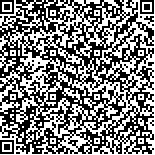| 引用本文: |
陈铭,陈聪,廖菁,余嗣澳,覃浩昌.基于网络药理学及实验验证探讨芎芪方治疗心肌缺血再灌注损伤的作用机制[J].湖南中医药大学学报,2024,44(2):266-277[点击复制] |
|
| |
|
|
| 本文已被:浏览 1760次 下载 1068次 |
| 基于网络药理学及实验验证探讨芎芪方治疗心肌缺血再灌注损伤的作用机制 |
| 陈铭,陈聪,廖菁,余嗣澳,覃浩昌 |
| (湖南中医药大学中医学院, 湖南 长沙 410208) |
| 摘要: |
| 目的 基于网络药理学初步预测芎芪方治疗心肌缺血再灌注损伤(myocardial ischemia-reperfusion injury,MIRI)的活性成分、作用靶点及信号通路,通过动物实验验证其可能的作用机制。方法 通过TCMSP、UniProt数据库获取芎芪方药理作用的活性成分及相关靶点;通过GeneCards、OMIM以及DRUGBANK数据库获取MIRI相关靶点;通过STRING平台进行PPI分析,构建PPI网络。通过DAVID数据库分析“芎芪方成分-靶点”及其参与的生物学过程及信号通路,采用Cytoscape 3.9.1软件构建“芎芪方-MIRI靶点-通路”网络。36只SD雄性大鼠随机均分为假手术组、模型组及芎芪方组,芎芪方组预防性灌胃给药(3.6 g·kg-1),假手术组、模型组灌胃给予等量生理盐水,均灌胃14 d。通过结扎大鼠冠状动脉左前降支的方法建立实验性MIRI大鼠模型。造模结束后,腹主动脉取血,ELISA法检测大鼠血清肌酸激酶同工酶MB(creatine kinase-MB,CK-MB)、丙二醛(malondialdehyde,MDA)、乳酸脱氢酶(lactate dehydrogenase,LDH)、肿瘤坏死因子-α(tumor necrosis factor-α,TNF-α)、白细胞介素-6(interleukin-6,IL-6)、超氧化物歧化酶(superoxide dismutase,SOD);HE染色观察心肌病理改变;Western blot法检测心肌组织原癌基因(Jun proto-oncogene,JUN)蛋白表达。结果 初步筛选获得芎芪方活性成分22个,药物疾病交集基因125个,其中蛋白激酶B1(akt serine/threonine kinase 1,AKT1)、白细胞介素-1β(interleukin-1β,IL-1β)、环氧合酶2(prostaglandin-endoperoxide synthase 2,PTGS2)等靶点可能与芎芪方预防MIRI密切相关,富集分析预测芎芪方预防MIRI主要涉及低氧诱导因子-1(hypoxia-inducible factor,HIF-1)信号通路、肿瘤坏死因子(tumor necrosis factor, TNF)信号通路、晚期糖基化终末产物(advanced glycosylation end product,AGE)-糖基化终末产物受体(receptor of advanced glycosylation end product,RAGE)信号通路及丝裂原激活的蛋白激酶(mitogen-activated protein kinase,MAPK)信号通路等。动物模型验证结果提示,芎芪方可有效减轻MIRI大鼠心肌细胞损伤程度,降低MIRI大鼠血清CK-MB、LDH、MDA、TNF-α、IL-6水平(P<0.01),提高SOD水平(P<0.01),降低MIRI大鼠心肌组织JUN蛋白表达(P<0.01)。结论 芎芪方可能通过抑制TNF-α、IL-6、JUN等靶点,减轻MIRI大鼠心肌炎性反应,发挥治疗MIRI的作用。 |
| 关键词: 心肌缺血再灌注损伤 芎芪方 网络药理学 作用机制 益气活血法 炎性因子 |
| DOI:10.3969/j.issn.1674-070X.2024.02.014 |
| 投稿时间:2023-08-04 |
| 基金项目:国家自然科学基金项目(81704065);湖南省教育厅科学研究项目(22A0274,23C0172);湖南省中医药科研计划项目(A2023030,B2023022);湖南省卫生健康委员会科研计划项目(202202084742);湖南中医药大学科研基金重点项目(2021XJJJ003);湖南中医药大学研究生创新课题(2022CX60,2023CX172)。 |
|
| Mechanism of action of Xiongqi Formula in treating myocardial ischemia-reperfusion injury based on network pharmacology and experimental verification |
| CHEN Ming,CHEN Cong,LIAO Jing,YU Siao,TAN Haochang |
| (School of Chinese Medicine, Hunan University of Chinese Medicine, Changsha, Hunan 410208, China) |
| Abstract: |
| Objective To preliminarily predict the active ingredients, targets, and signal pathways of Xiongqi Formula(XQF in treating myocardial ischemia-reperfusion injury(MIRI) based on network pharmacology, and to verify the possible mechanism of action through animal experiments.Methods The active ingredients and related targets of XQF in its pharmacological action were obtained by TCMSP and UniProt, and the related targets of MIRI were obtained from GeneCards, OMIM, and DRUGBANK. PPI analysis was performed on the STRING platform to construct the PPI network. The "XQF ingredients-targets" and their biological processes and signaling pathways involved were analyzed through DAVID. Then, the "XQF-MIRI targets-pathways" network was constructed using Cytoscape 3.9.1 software. Thirty-six male SD rats were averagely randomized into sham-operated group, model group, and XQF group. XQF group was given prophylactic administration of the corresponding medication by gavage(3.6 g·kg-1), and the sham-operated and model groups were given the same amount of normal saline by gavage, for 14 d respectively. The rat model of MIRI was established by ligating the left anterior descending coronary artery in rats. After the modeling, the blood was collected from the abdominal aorta of the rats, and the serum creatine kinase-MB(CK-MB), malondialdehyde(MDA), lactate dehydrogenase(LDH), tumor necrosis factor-α(TNF-α), interleukin-6(IL-6), and superoxide dismutase(SOD) were determined by ELISA. Myocardial pathological changes were observed by HE staining. Additionally, the protein expression of Jun proto-oncogene(JUN) in the myocardial tissue was examined by Western blot.Results A total of 22 active ingredients of XQF were obtained, as well as 125XQF-MIRI intersection genes, among which akt serine/threonine kinase 1(AKT1), interleukin-1β(IL-1β), prostaglandin-endoperoxide synthase 2(PTGS2), and other targets may be closely related to the prevention of MIRI by XQF. Enrichment analysis predicted that the prevention of MIRI by XQF mainly involved hypoxia-inducible factor(HIF-1) signaling pathway, tumor necrosis factor(TNF) signaling pathway, advanced glycosylation end product(AGE)-receptor of advanced glycosylation end product(RAGE)signaling pathway, mitogen-activated protein kinase(MAPK) signaling pathway, etc. Animal experimental verification showed that XQF effectively alleviated the myocardial cell injury in MIRI rats, decreased the serum levels of CK-MB, LDH, MDA, TNF-α, and IL-6(P <0.01), increased SOD level(P <0.01), and reduced JUN protein expression in the rat myocardial tissue(P <0.01).Conclusion Xiongqi Formula may play a role in treating MIRI by inhibiting TNF-α, IL-6, JUN, and other targets to reduce myocardial inflammatory response in MIRI rats. |
| Key words: myocardial ischemia-reperfusion injury Xiongqi Formula network pharmacology mechanism of action the method of benefiting qi and circulating blood inflammatory factor |
|

二维码(扫一下试试看!) |
|
|
|
|




